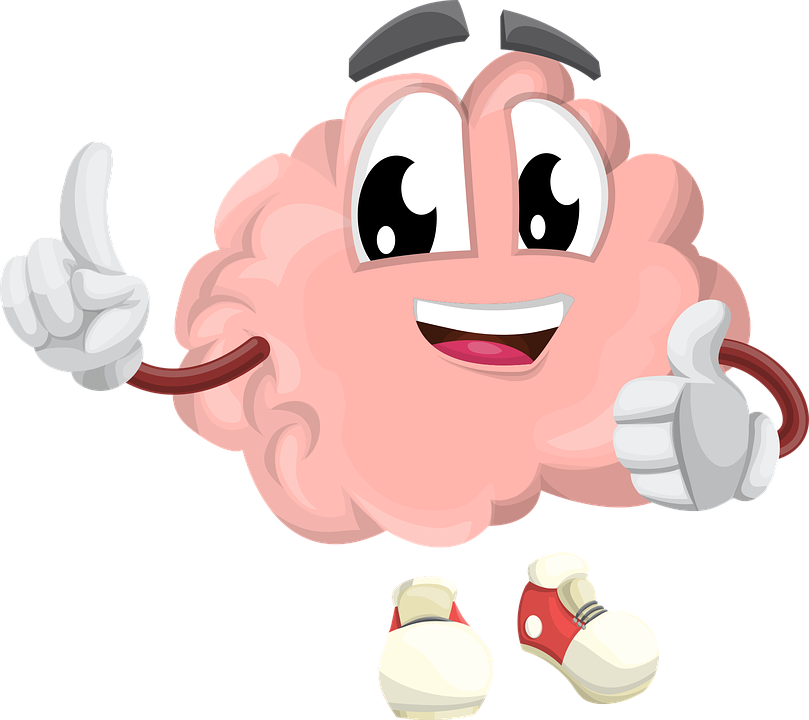What Our Brain Was Designed For (And How We Are Using It) This basic primer has hopefully given you a good idea of how your brain works on a day-to-day basis and you’re probably already seeing ways that you can improve its function: by increasing the number of desirable neurotransmitters for example, or by forming new connections by repeatedly performing two actions together that you want to become associated.
But what can also help a great degree is to understand what the brain was designed for and thereby why it is built the way it is. And this all comes down to evolutionary psychology.
You Are an Adaptoid
 The most important thing to understand about your brain is that it is built for survival. And how do you survive? By adapting to your environment. Every single aspect of your brain function is tied to this basic principle and that means that a lot of the way your brain works can be predicted in different circumstances.At one point during the development of modern psychology, a field called ‘behaviorism’ reigned.
The most important thing to understand about your brain is that it is built for survival. And how do you survive? By adapting to your environment. Every single aspect of your brain function is tied to this basic principle and that means that a lot of the way your brain works can be predicted in different circumstances.At one point during the development of modern psychology, a field called ‘behaviorism’ reigned.
What this school of thought basically told us, was that everything could be rote learned and that our entire subjective experience of the world was based on associations we formed through our interactions with the world.The most famous example of this principle in action was the study referred to as ‘Pavlolv’s Dogs’. In this study, Ivan Pavolv rang a bell every single time he fed dogs.
Over time, he found that the dogs would develop a response to the sound of the bell – they would begin salivating even when there was no food present. This demonstrated that they learned through association and that the simple repetition was enough to form that association. Behaviorism says that everything we know is learned in this way. As babies we are largely ‘blank slates’ (though not entirely) and thus we learn how to interact with the world through association.
For example, we learn that by reaching for things we will often be passed them. Thus we develop an understanding for the reaching gesture. When we touch fire, it causes a burning sensation, and the association that forms teaches us not to touch flames again. When we eat, it releases serotonin and we learn that we like eating. We come to associate the smell of cookies with Grandma’s house and we learn language by seeing how people react to different words.
On a neural level, we now know that this is all to do with neural plasticity. Once again – what fires together, wires together. And when something is very important (like the fire), dopamine and other neurotransmitters are released to make that memory form even faster. Our environment is always changing and thus this is the best way for the brain to survive.
By adapting to different environments, our brains ensure that the behaviors we acquire are perfectly suited to the environment we’re in. Ultimately, we learn to avoid danger and gravitate toward food, sex and shelter. Why is this so important to understand? Because we’re adapting to any situation we’re put in. That means that you’re still adapting right now to working in an office, being constantly stressed and looking at your phone a lot.The connections you’re not using are atrophying, while many unhealthy behaviors continue to strengthen with time.
Enter: CBT and Embodied Cognition
 But while behaviorism did a fine job of explaining psychology for a long time, it was eventually found to be overly simplistic and unable to explain the full gamut of human experiences. For instance, most of us would agree that we can learn things by reading for example. How does this fit into the behaviorist model? And how can you become phobic of heights without ever having fallen from a height?
But while behaviorism did a fine job of explaining psychology for a long time, it was eventually found to be overly simplistic and unable to explain the full gamut of human experiences. For instance, most of us would agree that we can learn things by reading for example. How does this fit into the behaviorist model? And how can you become phobic of heights without ever having fallen from a height?
CBT (cognitive behavioral therapy) uses behaviorism as a starting point and then builds a cognitive element on top of that. This states that what we think also plays an important role – and that we can actually create new associations by thinking. In other words, if you think about falling, then this can create new neural connections as though you were falling – and that in turn can lead to the formation of a phobia, or to changes in personality.
Hold that concept in your mind for a moment while we take a look at another concept: this one is called ‘embodied cognition’. Embodied cognition is a more recent psychology theory that says all of our understanding of the world around us comes from our bodies. This fits with the evolutionary explanation that our brains evolved to help us survive in our environment based on our interactions.
The question that was posited to psychologists was this:
when someone tells you some information, how do you understand that? You learned English growing up, yes, but what is it that allows you to understand English? Your brain doesn’t innately understand English, so you must be ‘translating’ that language into something like a machine code in order to process it. For a while, psychologists made up the term ‘mentalese’ in order to explain this gap. But later a more useful theory was put forward.
Embodied cognition explained that we understand language by relating it back to our understanding of the world around us. When you hear someone telling you a story about walking through a cold forest, you understand that by imagining yourself walking through a cold forest and this causes all those relevant neural connections to fire as you think of the implications of that, relevant memories etc.
And what’s actually happening here, is that the areas of your brain are firing as though that story was really happening to you.If you put someone under an MRI scanner while you tell them about the time you went swimming, their brain areas will light up as though they were going swimming. And this is how simply imagining something or picturing something can create associations in your brain.
If you are high up and you keep imagining falling off that height, then your neurons will fire at the same time as though you were falling off that height. This is enough to cause those neurons to wire together and to create a strong connection – to the point where it’s hard not to picture falling off of that height. This causes a flood of neurotransmitters related to the experience of falling and what do you know – you pass out in a sweaty heap!













